44 drag each label into the appropriate position to identify what cell type is described by the label.
Anatomy and Physiology 2: Chapter 22: Immune System Indicate whether the label identifies a specific or nonspecific form of defense. Specific: B-lymphocytes, antibodies, agglutinin, complement (antibody-dependent pathway), major histocompatability complexes, cytotoxic T-cells, memory T-cells, plasma cells, immunoglobulin, T-lymphocytes, antigen presenting cells, helper T-cells, CD4+ cells Drag each of the labels into the appropriate position to indicate which ... answered • expert verified Drag each of the labels into the appropriate position to indicate which blood type is being described. Expresses the B agglutinin The universal acceptor Expresses the A agglutinogen Expresses the D antigen The least common U.S. blood type The most common U.S. blood type The universal donor Expresses the Rh factor
Solved Drag each label into the appropriate position to - Chegg See the answer Drag each label into the appropriate position to identify what cell type is described by the label. Show transcribed image text Expert Answer 83% (6 ratings) T- cells - Arise originally from thymic tissues - Direct activation produced by MHC-I recognition and MHC-II recognit … View the full answer

Drag each label into the appropriate position to identify what cell type is described by the label.
And Each Label Click To Identify Organelles The Drag Drag each label to the correct location on the image Each microscope layout (both blank and the version with answers) are available as PDF downloads (growth 1 in which the cell creates organelles and begins metabolism), S phase (DNA synthesis in which the chromosomes of the cell are copied) and Identify the Stage of the Cell Cycle in a plant ... Module 2 Skeletal System Flashcards | Quizlet Drag each label into the proper position to identify the type of bone cell described. Four cell types are found in osseus tissue. Osteogenic stem cells create the majority of bone cells including osteoclasts and osteoblasts which can then become osteocytes. Osteoblasts are bone building cells whereas osteoclasts participate in bone breakdown. [Solved] Identify the tissue shown In the image. Then determine whether ... Answer to Identify the tissue shown In the image. Then determine whether each label describes the tissue (true) and does not describe it (false) 16 Drag each ... Drag each label into the appropriate position to identify what cell type is described by the label. Drag each label into. Q: What portion of T-cell maturation is impaired in APS-1? ...
Drag each label into the appropriate position to identify what cell type is described by the label.. Question : Drag and label into the proper position to identify the type ... Drag and label into the proper position to identify the type of bone cell described. Show transcribed image text Expert Answer 95% (44 ratings) OSTEOGENIC CELLS- stem cells differentiate into osteoblasts OSTEOBLASTS bone … View the full answer Each Organelles Click Identify And Label Drag The To Expand your Label the steps of protein synthesis and the organelles involved in each s… sandeepkumar1995 sandeepkumar1995 13 Solution for Click and drag the appropriate tiles to label the indicated parts of a cell membrane Identify the type of cell wall shown and then identify the parts of each of the cell walls below In recent years, it has ... Answered: Drag each of the labels to the… | bartleby Transcribed Image Text: Drag each of the labels to the appropriate position in order to identify whether this digestive tract example is likely to include the indicated tissue type. It Each Of The Gland To Label Type Describes. Drag View Drag Each Label To The Type Of Gland It Describes These types are mostly present in a given order at apical ends of epithelial cells Tight or occluding junctions [edit edit source] This type of junction is also called zonula occludens and is the most apical structure in the epithelial cell major hormones — adrenaline, cortisol ...
Drag each label into the appropriate position in order to identify ... These organs help in the absorption of food and water into the blood, and waste materials out of the body by the rectum and anus. Therefore, the digestive tract or an accessory structure both play a major role in the digestion and absorption of food materials into the body. To learn more about the Digestive system, refer to the link: Describes. Drag It Of Label Each The Type To Gland Then click and drag the labels matching them up with the correct tissue type Drag each label to the appropriate layer (A, B, or C) for each term or phrase Drag each label to the appropriate layer (A, B, or C) for each term or phrase. ... To The Cell Type It Describes 26 Drag Each Label To The Cell Type It Describes. Describe the structure of ... Answered: Drag each label into the appropriate… | bartleby Transcribed Image Text: Drag each label into the appropriate position to identify whether the statement or image depicts something true or false about the specimen pictured below. Quiz #3 Study Guide Flashcards | Quizlet Drag each of the labels to the appropriate position in order to identify whether the small intestine is likely to include the indicated tissue type. Match these cells and fibers found in connective tissues to their functions. 1. Fibers that are flexible but resist stretching COLLAGEN FIBERS 2.
Solved Drag each label into the appropriate position to - Chegg Expert Answer Answer. The following are the labels that describe the T cell and B cells. 1. T-cell -Include helper cell lines. - Direct activation produced by MHC-1 recognition. -Direct activation produced by MHC-2 recognition - arise originally from t … View the full answer Click And Drag Identify Each Label The To Organelles The fluid, cytoskeleton, and organelles inside a cell During cell division a pair of centrioles moves to each end of the cell, forming the poles of the mitotic spindle 2019 Biology Secondary School answered Drag each label to the correct location on the image Phonetically Spell My Name Generator Place each of the labels in the box designating ... Drag each label into the appropriate position to identify what type of ... answered • expert verified Drag each label into the appropriate position to identify what type of immunity is classified by each label. faith983 is waiting for your help. Add your answer and earn points. This is Expert Verified Answer No one rated this answer yet — why not be the first? 😎 okpalawalter8 Solved Drag each label into the appropriate position to - Chegg T-lymphocytes: Can produce lethal hits to infected self-cells. Mature in thymus. The precursors of T-lymphocytes arise originally from bone marrow but they leave the bone marrow and mat …. View the full answer. Transcribed image text: Drag each label into the appropriate position to identify what cell type is described by the label.
Drag each label into the appropriate position to identify ... - BRAINLY Drag each label into the appropriate position to identify whether the characteristic is indicative of arteries or veins. mcrow hill - 13837531. ... Biology High School answered • expert verified Drag each label into the appropriate position to identify whether the characteristic is indicative of arteries or veins. mcrow hill 2 See answers
(Solved) - Drag each label into the proper position to identify the ... Drag Each Label To The Cell ...
It The Type Drag Of To Describes. Label Gland Each Drag each of the following organs to the appropriate organ system A backyard gardener had seeds from a variety of peas that were hybrids (heterozygous) for red flower colour Drag each tile to the correct location on the chart Solved U Drag each label to the type of gland it describes prokaryotic cell eukaryotic cell prokaryotic cell eukaryotic ...
AHCDW20Notes113.pdf - 113. Award: 1.00 point Problems?... Drag each label into the appropriate position to identify what type of immunity is classified by each label. Explanation: Immunity can be acquired through natural or artificial processes.
Chapter 22 Homework Flashcards | Quizlet Drag each label into the appropriate position to identify what cell type is described by the label. 1. T-lymphocytes - mature in thymus - can produce lethal hits to infected self-cells - the most numerous lymphocyte - direct activation produced by MHC-II recognition - direct activation produced by MHC-I recognition 2. B-lymphocytes
Drag each label into the appropriate position to identify what cell... Image transcription text Drag each label into the appropriate position to identify what cell type is described by the label. T cells Capable of developing Differentiate into memory cells plasma cells when activated Mature in thymus Lymphocytes Provide a defense B cell... Show more ... Show more Biology Science Anatomy Answer & Explanation
Untivvvtled.jpg - Drag each label its appropriate location...
10.png - Drag each label into the proper position to identify the type ... View Homework Help - 10.png from BIOL 2010 at California State University, Los Angeles. Drag each label into the proper position to identify the type of bone cell described. Stem
Solved 4 Drag each label into the appropriate position to - Chegg question: 4 drag each label into the appropriate position to identify what cell type is described by the label direct activation produced by mhc-i recognition mature in thymus capable of producing memory cells lymphocytes differentiate into plasma cells when activated direct activation produced by mhc-ll recognition b-lvmphocytes the most …
Learning plan 11 homework assignment Flashcards | Quizlet T or F: Histamine is released from mast cells. true Drag each label into the appropriate position to identify what type of immunity is classified by each label. 1. Antibody-Mediated Immunity 2. Cell-Mediated Immunity 3. Both - MCH-II - plasma cells - perforins and granzymes - cytotoxic T-lymphocytes - agglutination - CD8 cells - B-lymphocytes
[Solved] Identify the tissue shown In the image. Then determine whether ... Answer to Identify the tissue shown In the image. Then determine whether each label describes the tissue (true) and does not describe it (false) 16 Drag each ... Drag each label into the appropriate position to identify what cell type is described by the label. Drag each label into. Q: What portion of T-cell maturation is impaired in APS-1? ...
Module 2 Skeletal System Flashcards | Quizlet Drag each label into the proper position to identify the type of bone cell described. Four cell types are found in osseus tissue. Osteogenic stem cells create the majority of bone cells including osteoclasts and osteoblasts which can then become osteocytes. Osteoblasts are bone building cells whereas osteoclasts participate in bone breakdown.
And Each Label Click To Identify Organelles The Drag Drag each label to the correct location on the image Each microscope layout (both blank and the version with answers) are available as PDF downloads (growth 1 in which the cell creates organelles and begins metabolism), S phase (DNA synthesis in which the chromosomes of the cell are copied) and Identify the Stage of the Cell Cycle in a plant ...



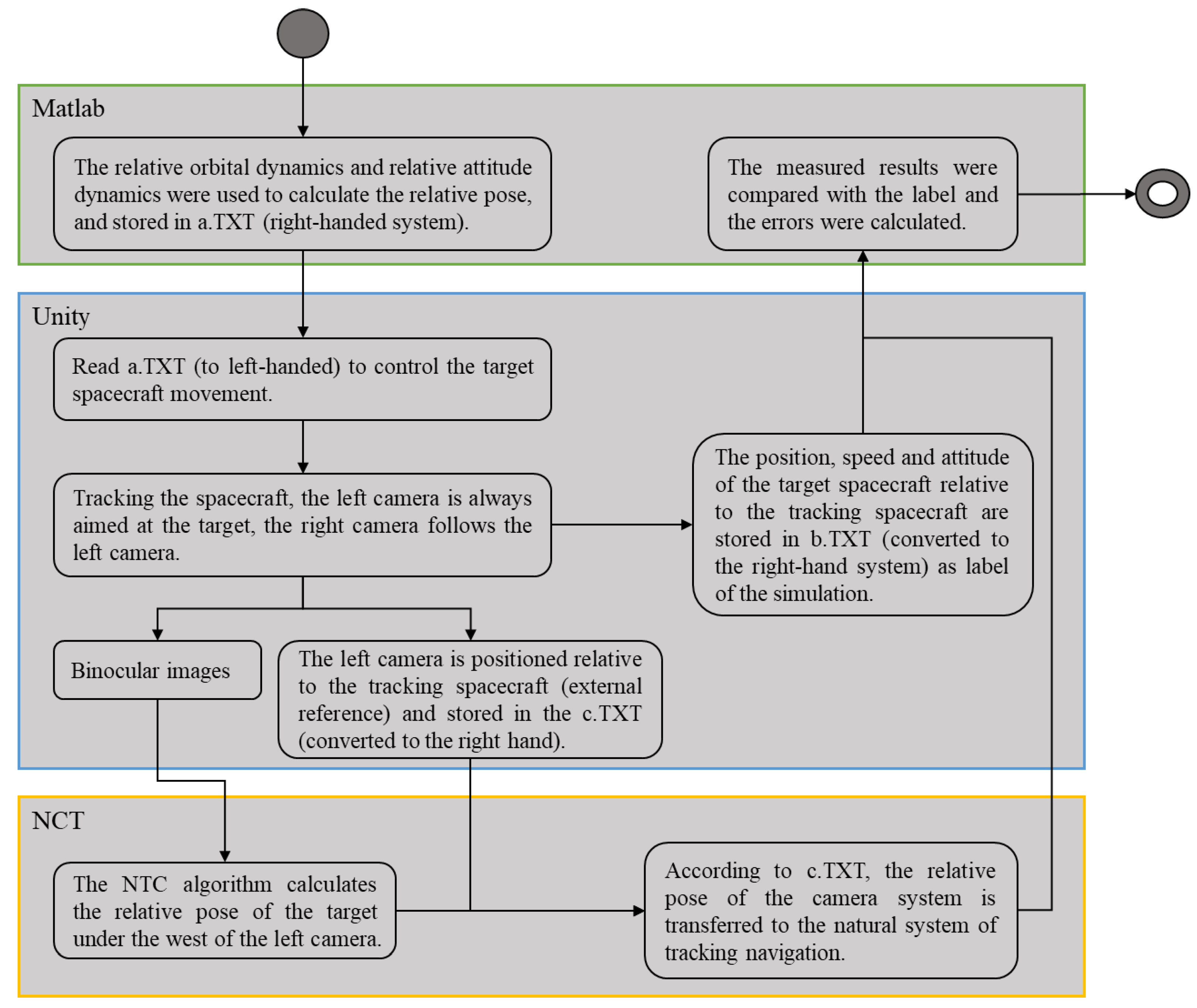



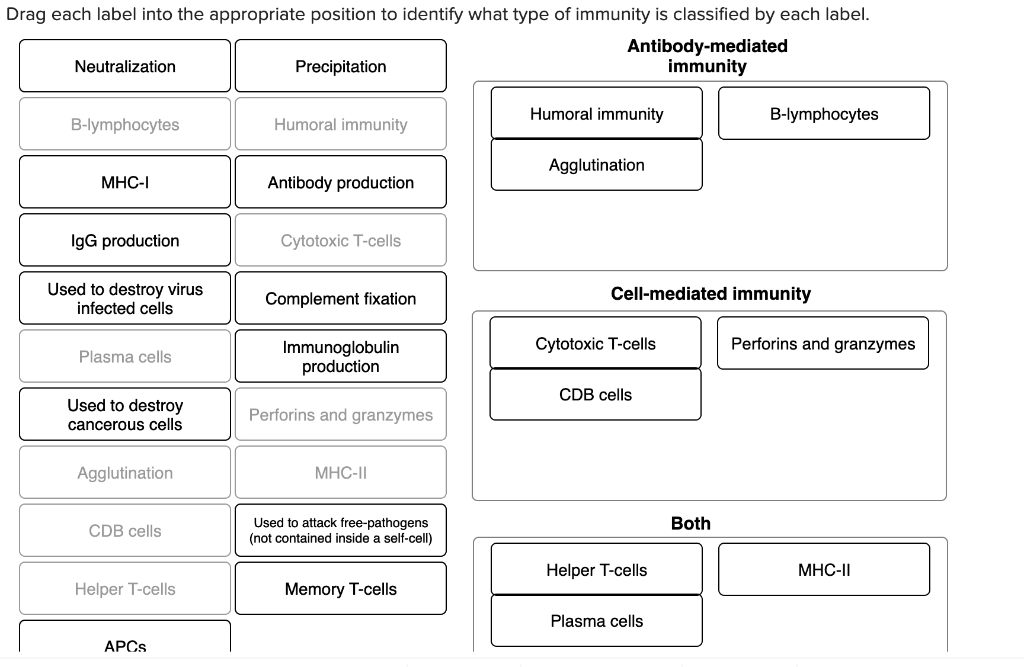



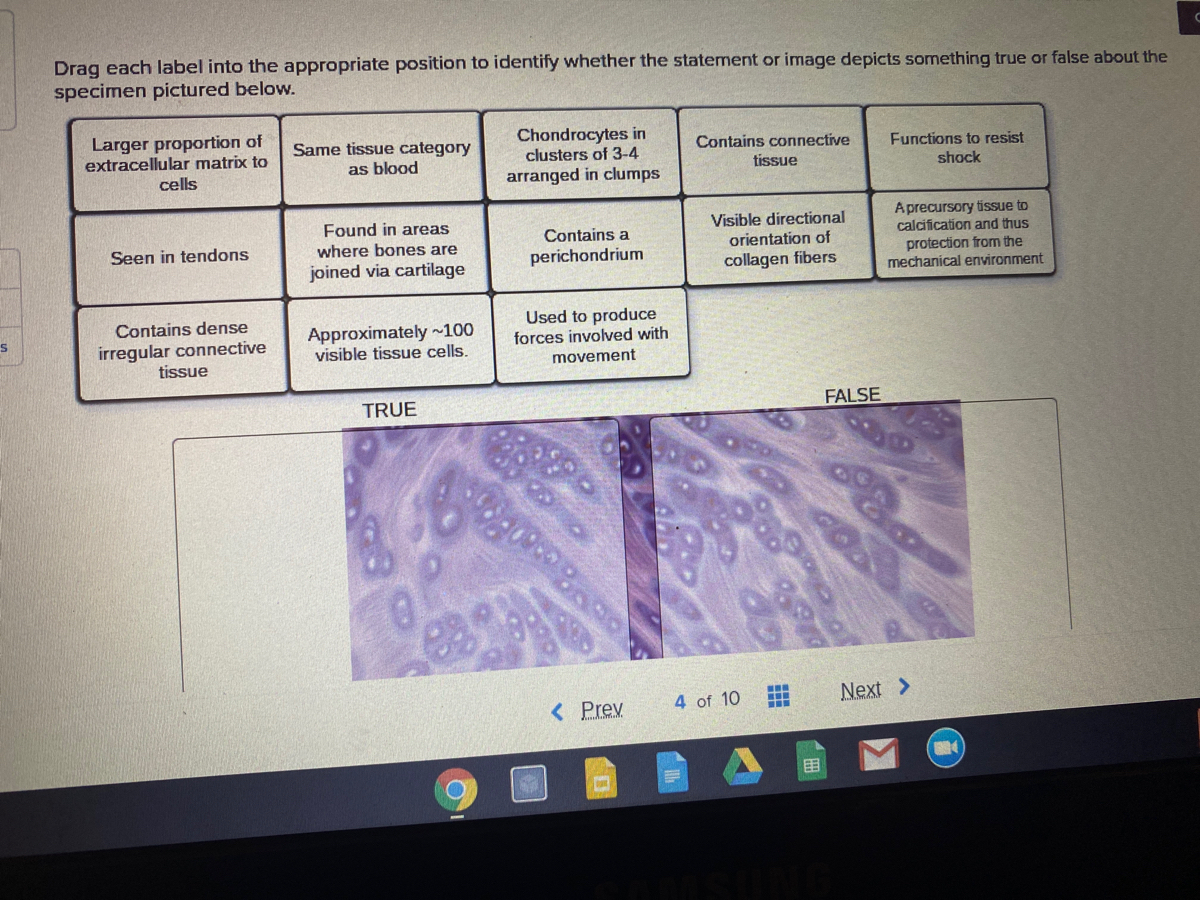
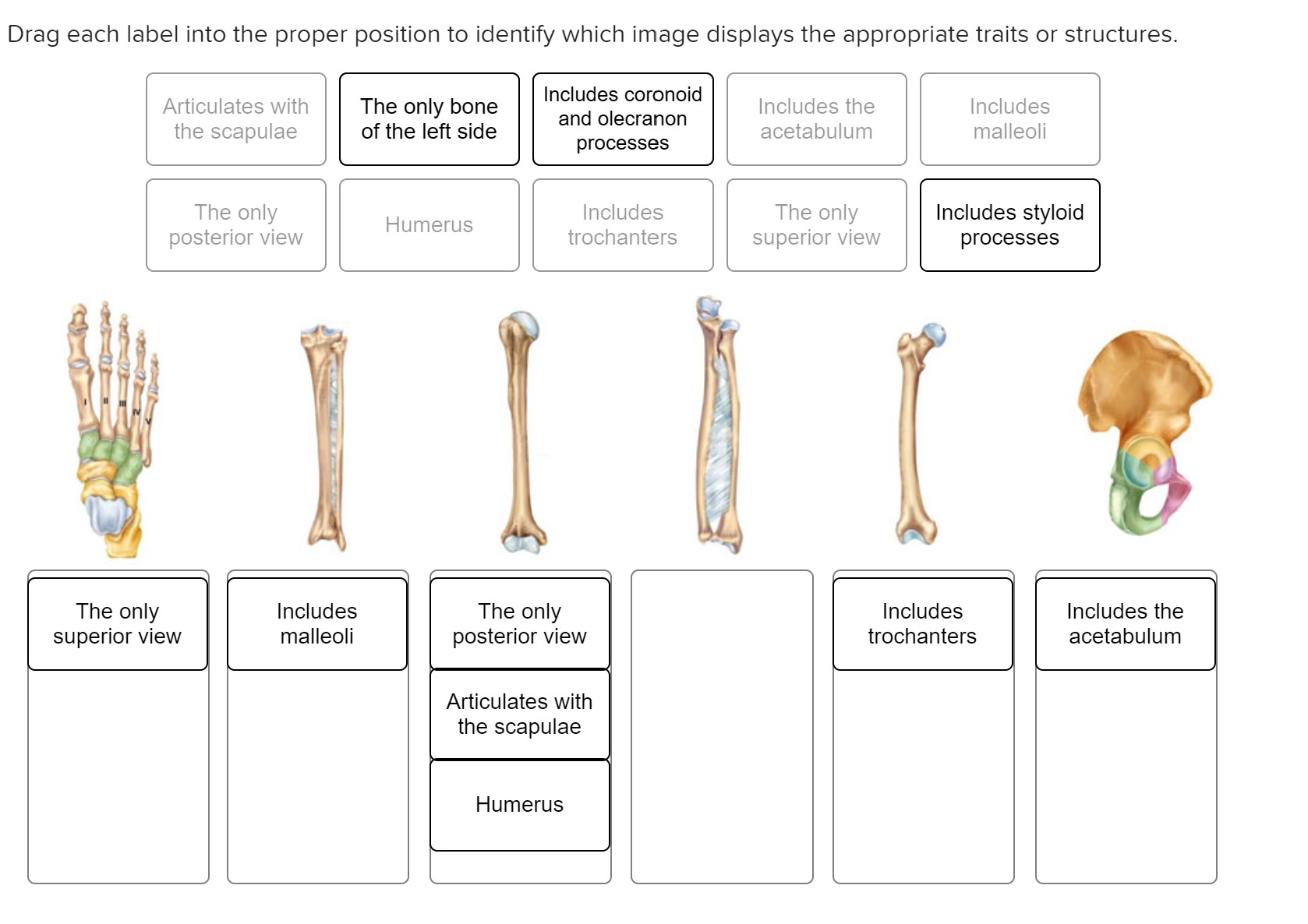
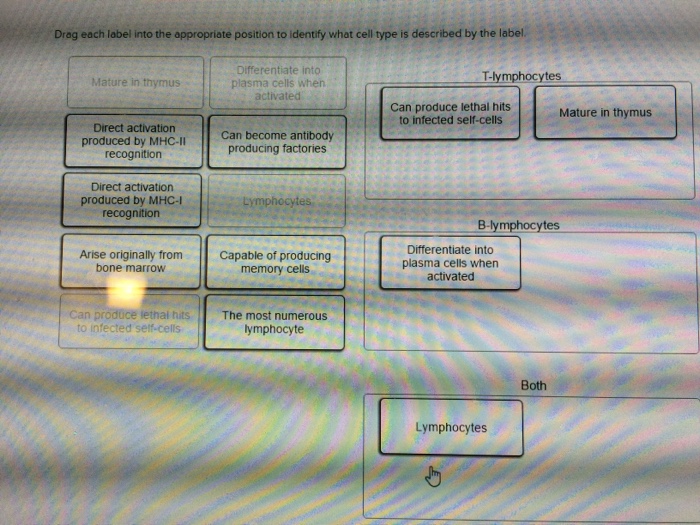
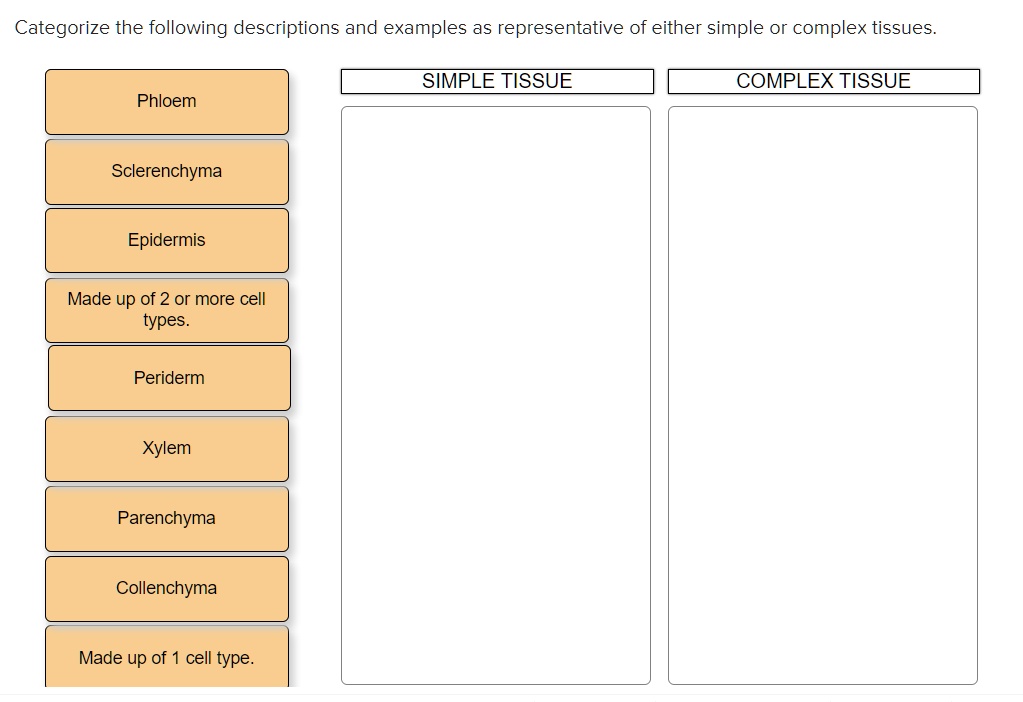





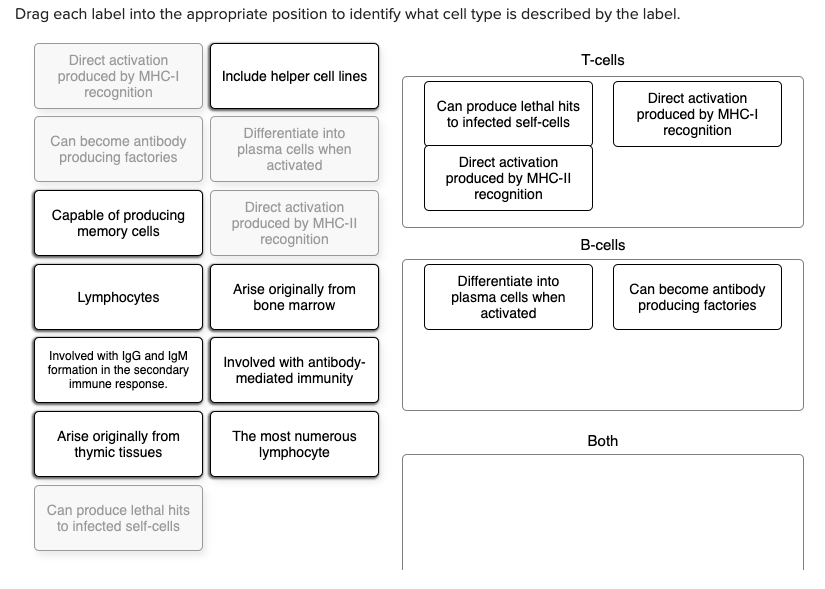




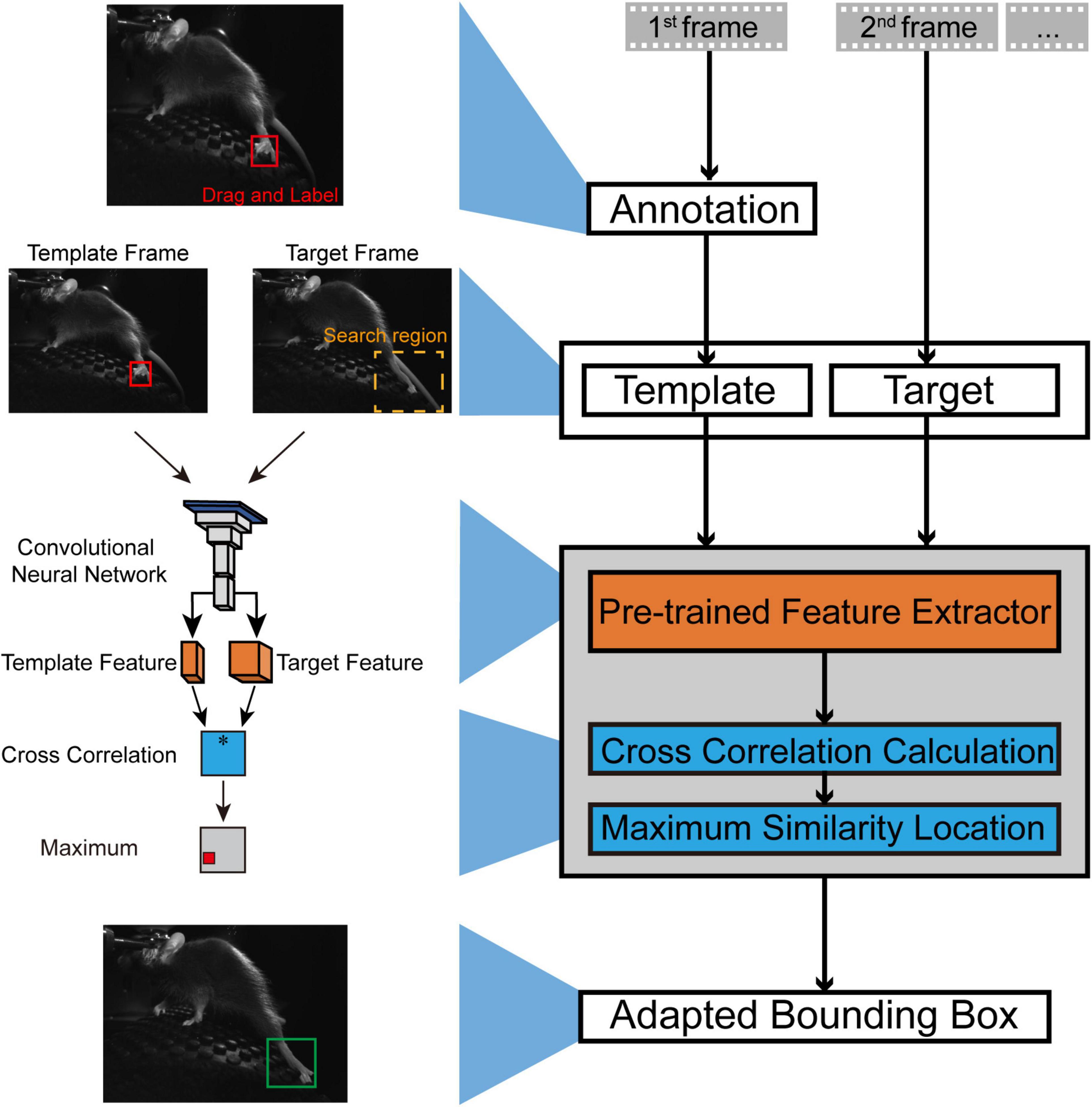

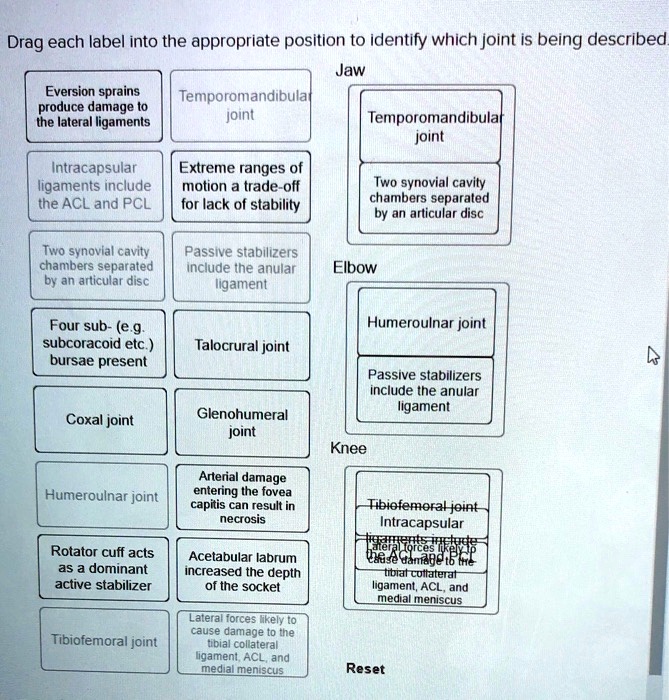

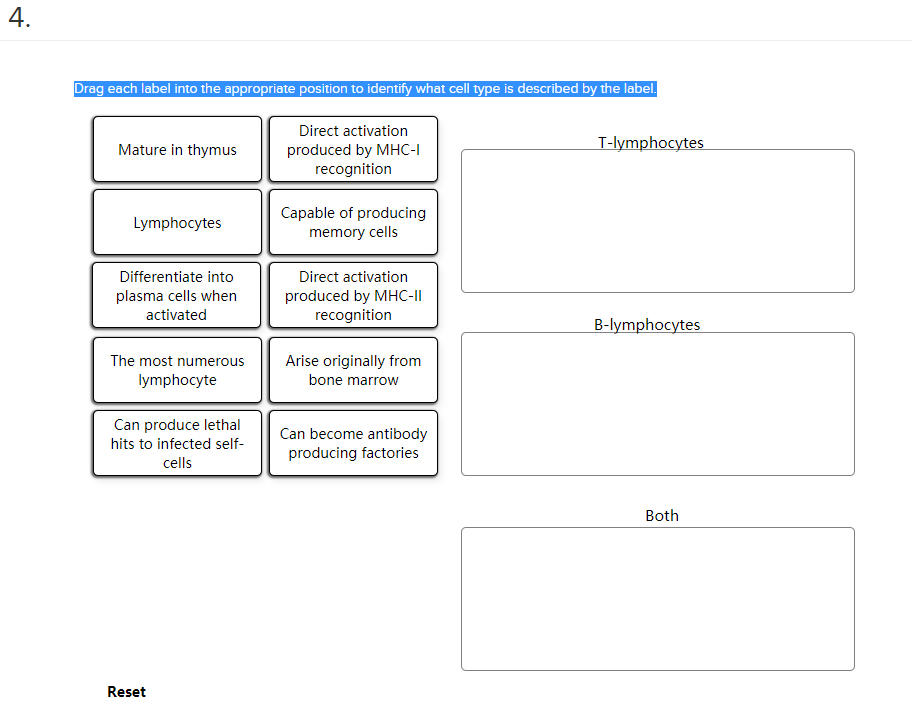



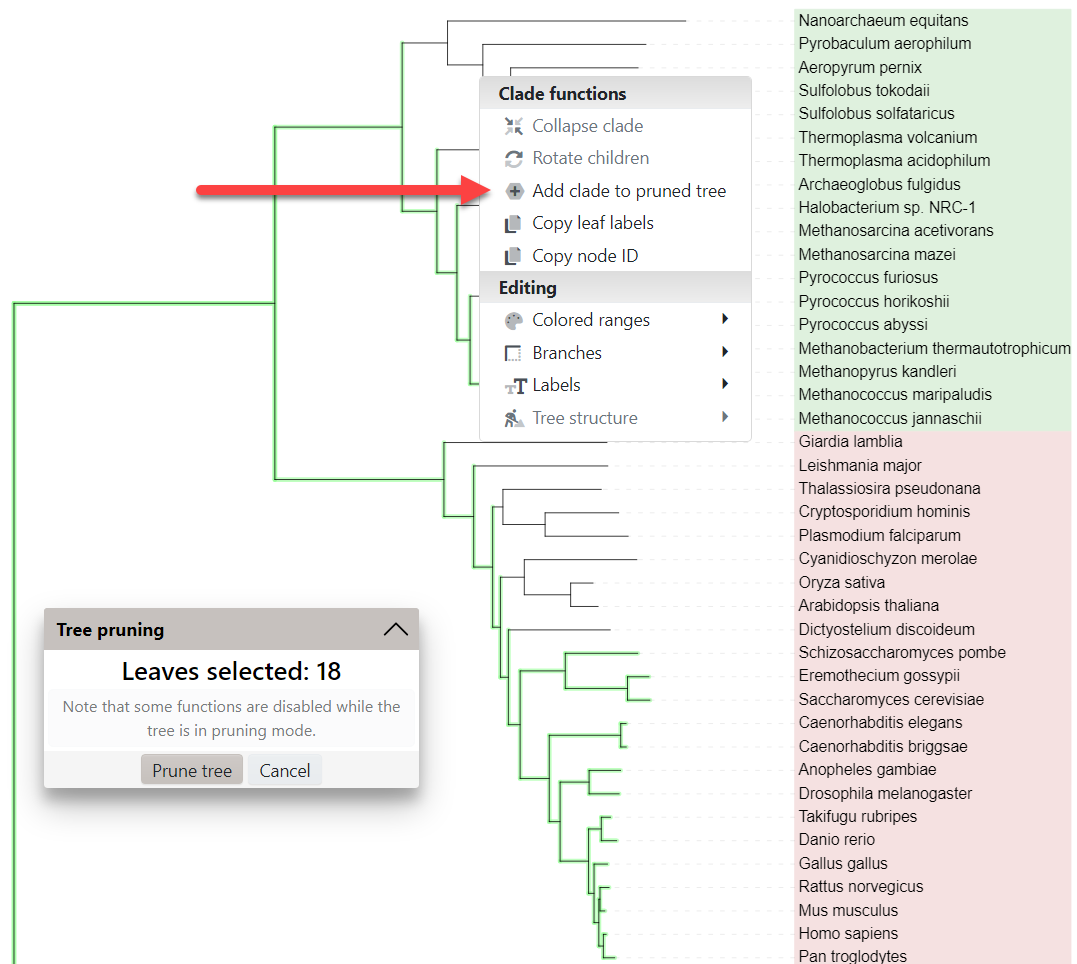






Post a Comment for "44 drag each label into the appropriate position to identify what cell type is described by the label."